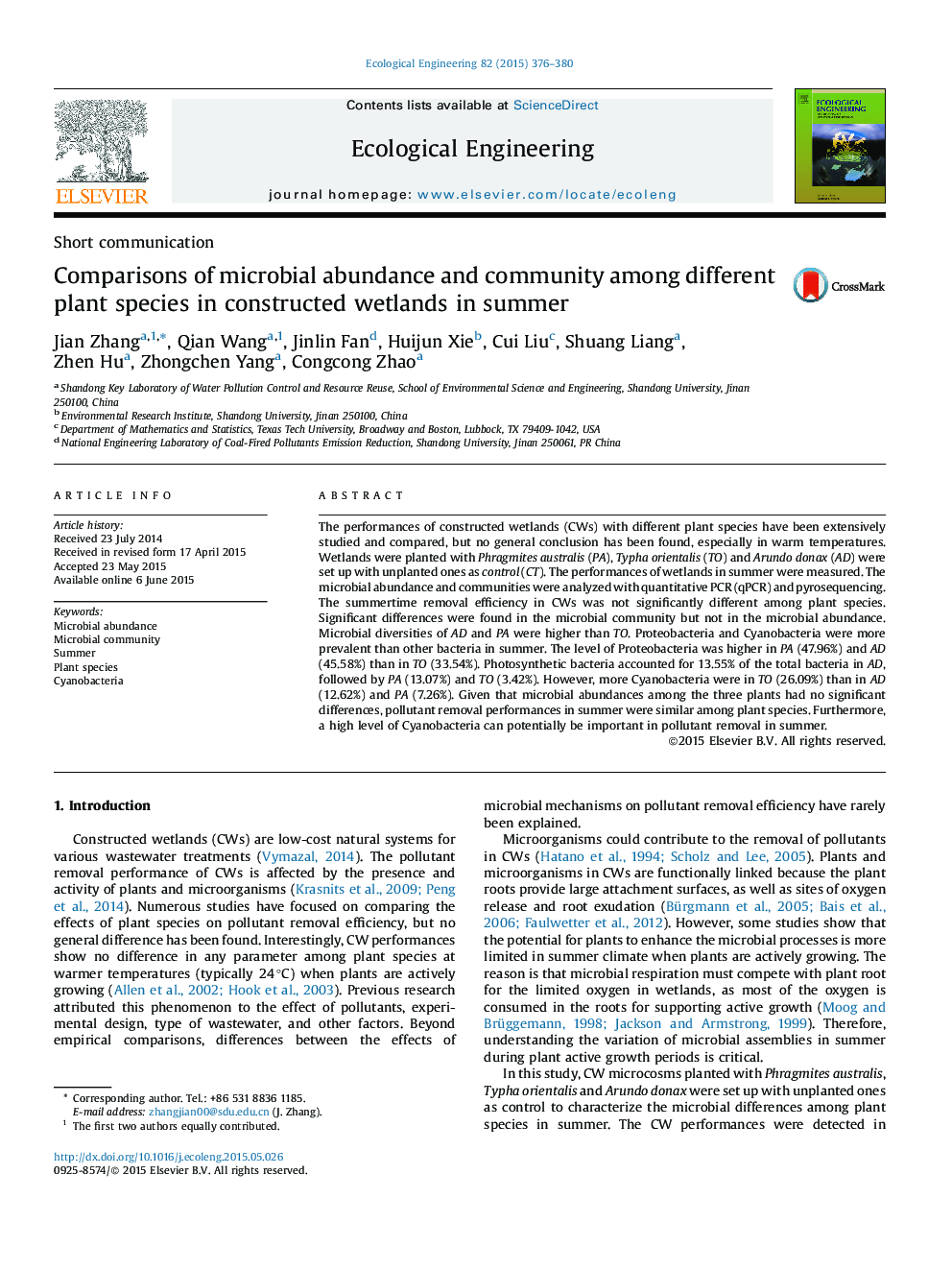| Article ID | Journal | Published Year | Pages | File Type |
|---|---|---|---|---|
| 4388985 | Ecological Engineering | 2015 | 5 Pages |
The performances of constructed wetlands (CWs) with different plant species have been extensively studied and compared, but no general conclusion has been found, especially in warm temperatures. Wetlands were planted with Phragmites australis (PA), Typha orientalis (TO) and Arundo donax (AD) were set up with unplanted ones as control (CT). The performances of wetlands in summer were measured. The microbial abundance and communities were analyzed with quantitative PCR (qPCR) and pyrosequencing. The summertime removal efficiency in CWs was not significantly different among plant species. Significant differences were found in the microbial community but not in the microbial abundance. Microbial diversities of AD and PA were higher than TO. Proteobacteria and Cyanobacteria were more prevalent than other bacteria in summer. The level of Proteobacteria was higher in PA (47.96%) and AD (45.58%) than in TO (33.54%). Photosynthetic bacteria accounted for 13.55% of the total bacteria in AD, followed by PA (13.07%) and TO (3.42%). However, more Cyanobacteria were in TO (26.09%) than in AD (12.62%) and PA (7.26%). Given that microbial abundances among the three plants had no significant differences, pollutant removal performances in summer were similar among plant species. Furthermore, a high level of Cyanobacteria can potentially be important in pollutant removal in summer.
